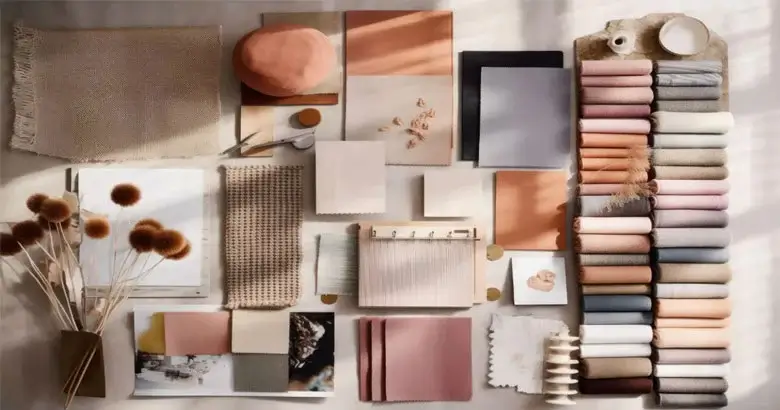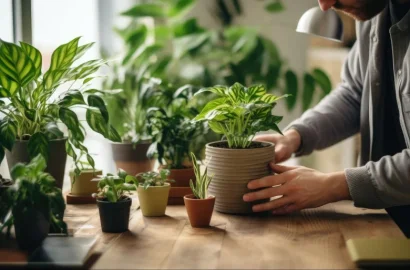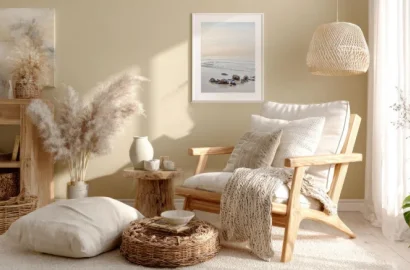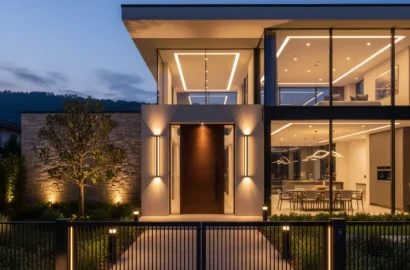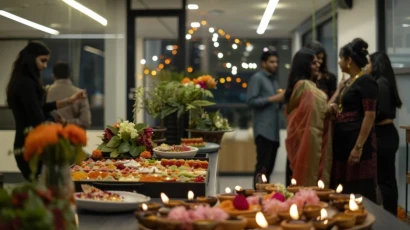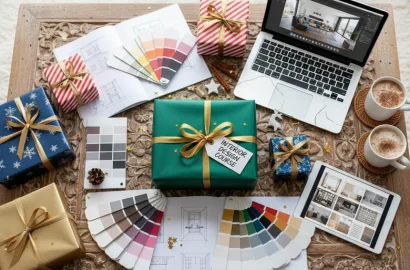A mood board is your blank canvas for storing ideas and curating your most stylish interior design looks. Follow our step-by-step guide here to create a professional mood board to inspire and support your interior designs
Whether you’re redesigning a room in your own home or working on an interior design project for a client, a mood board is a perfect way to collect inspiration, curate a specific look, and share your vision with others.
In this guide, we’ll be walking you through how to make a digital mood board for interior design that is stylish, coherent, and professional-looking that will do justice to your interior design ideas. We’ll also be outlining the top mood board software and tools that will make it easier for you to curate your project and manage the process from start to end.
Using an interior design mood board ensures that all elements of home decor, from furniture selection to color schemes, are cohesively planned and executed.
Here’s exactly what we’ll be covering.
- What is a mood board in interior design?
- How to create an interior design mood board
- What are the benefits of using an interior design mood board?
- Advantages of a physical mood board
- Advantages of a digital mood board
- Popular mood board tools and software
- Conclusion
Ready to get started? Then, let’s go.
What is a Mood Board in Interior Design?
A mood board, sometimes known as an inspiration board or an interior design mood board, is a visual collection of the design elements a designer is considering to include in their interior design project. It can be a physical mood board, such as a collage, or a digital version, such as a PDF.
A mood board is typically made up of selected pictures, photographs, materials, colors, textiles, and ideas that the interior designer feels inspired by and which they feel could feed into the end design. As the mood board evolves, the images and ideas are curated to communicate a specific look. While the creation of the mood board helps a designer work out their ideas and decide what might or might not work, the final mood board is also extremely useful as a tool to communicate the designer’s vision of the interior to clients, team members, or other stakeholders.

How to Create an Interior Design Mood Board
Whether you’re hoping to gather ideas for a revamp of your own home or learning this essential interior design skill for professional reasons, we’ve compiled the steps you need to take to put together an interior design mood board that will both inspire your project and keep you and your collaborators on the right track.
Let’s dive right into it!
1. Choose the room you want to design or redesign
This may seem obvious, but it’s important to be clear about the scope of your project before starting a mood board. Make sure to decide at the outset which room or space you want to create a mood board and stick to it. An interior design mood board with a defined scope, e.g. a bedroom, enables more creative freedom within the boundaries you have set, while a mood board that tries to cover too many rooms or topics will quickly overwhelm you, confuse collaborators, and negatively impact your productivity.
2. Decide on your tools
Once you’ve decided on the room or scope of your design, your next step is deciding on the interior design tools you might use to create your mood board. Points to bear in mind when choosing your mood board tool include cost, collaboration functions, ease of use, access to image libraries, and whether the tool is designed for total beginners or professional interior designers. We’ll be diving into the details of a few different tools, such as Canva, Pinterest, and Morpholio Board, later in this post.
3. Decide on the layout of the mood board
The layout of the different elements on your mood board will determine how it is going to look. If you are working on a project for a client, the appearance of your mood board will be particularly important, as you will be using it to communicate your vision and get their buy-in. There are several factors to consider when it comes to the layout of your mood board. The following descriptions represent different ways you may wish to present your ideas.
- Sectioned by emotion
- In a linear fashion
- In a state of organized chaos
- Dominated by an overall theme
- Divided into different themes
- Divided into areas of the room
- Divided into types of elements, such as furniture, color schemes, accessories, or textiles
- Just images
- Using images and words
4. Gather inspirational images
Now that you’ve got a good understanding of how you’re going to curate your mood board, the fun can start! This step in the process involves gathering images, words, and phrases that communicate how you envision the space. While some people prefer to simply gather inspirational images first and categorize them later, others prefer to create a list of keywords or phrases to work from first as it can make the process a little more manageable and prevents information (or image) overload.
When gathering your images, cast your net wide. While searching for images on Google is great as a starting point, don’t be afraid to look at old photos, newspapers, or magazines too. Free image sites such as Pinterest and Unsplash are also good resources for finding thought-provoking and emotionally arousing images that lend themselves to the theme you are hoping to represent. Finally, don’t be afraid to take inspiration from your own life. When out for a walk, you may notice autumnal leaves, a red brick building, or a vintage bicycle; photographs of which can all be used on your mood board.
5. Save your ideas
This one might sound obvious too, but don’t forget to save the images that you find! If you’re taking physical clippings from magazines, keep them in a folder or file, while digital photographs can be saved to the cloud or your computer hard drive. If you’re collecting images online, many digital mood board tools will enable you to save your images before you get to the curation part of the process by tagging them as “favorites” or something similar. Once you have this library of images, you’re in a much stronger position to select the right pieces for your curated mood board.
6. Choose a style/s
With all of your materials gathered in one place, you can start to zoom in on a particular style or aesthetic that speaks to you. If you’ve not done this already, a good rule of thumb is to separate the images you have into different style categories such as farmhouse, traditional, shabby chic, contemporary, minimalist, and so on. While some interior designers prefer to stick to just one style for a space, this is by no means the only way to go. With careful curation, mixing styles can produce a beautiful and unique aesthetic too.
7. Select your color scheme
Your color palette will set the tone for the entire space you are redesigning which is why it’s hugely important to get it right. This stage in the process is the perfect time for experimenting with different hues, shades, and gradients to find out which color combinations meet your or your client’s needs before you commit to a color design decision. Take inspiration from the ideas and images you’ve already saved as well as from the general mood you want to create for the space. You may be drawn to romantic tones such as peach or burgundy for a bedroom, for example, or want to try out warm tones such as rust or mahogany for a living area. Earthy tones such as brown and clay can be great in a bathroom, while fresh-feeling colors such as off-white and ivory can work well in a kitchen.
Remember, you won’t be using just one color in the room you are designing. You’ll want to choose two or more colors, with one acting as the base and the others used to complement it.
8. Coordinate all elements
Now that you’re clear on your desired style and color scheme for the room, you can start to curate the images you’ve found to see what can be eliminated and what can be kept. If your chosen style is minimalist and your color palette is gray, white, and beige, you’ll want to keep images of furniture and textiles that match this aesthetic. You needn’t be too strict, however. The goal is to design a space that you (or your clients) love and, although you’ll want cohesion and consistency within your chosen style and color palette, don’t worry too much if everything doesn’t match perfectly. Your (or your clients’) individual preferences should also come into play, so get creative with the images you’ve collected and figure out what works best for you. Once the final images are selected, you can simply arrange them artfully in the layout you chose in Step 3.
What are the Benefits of Using an Interior Design Mood Board?
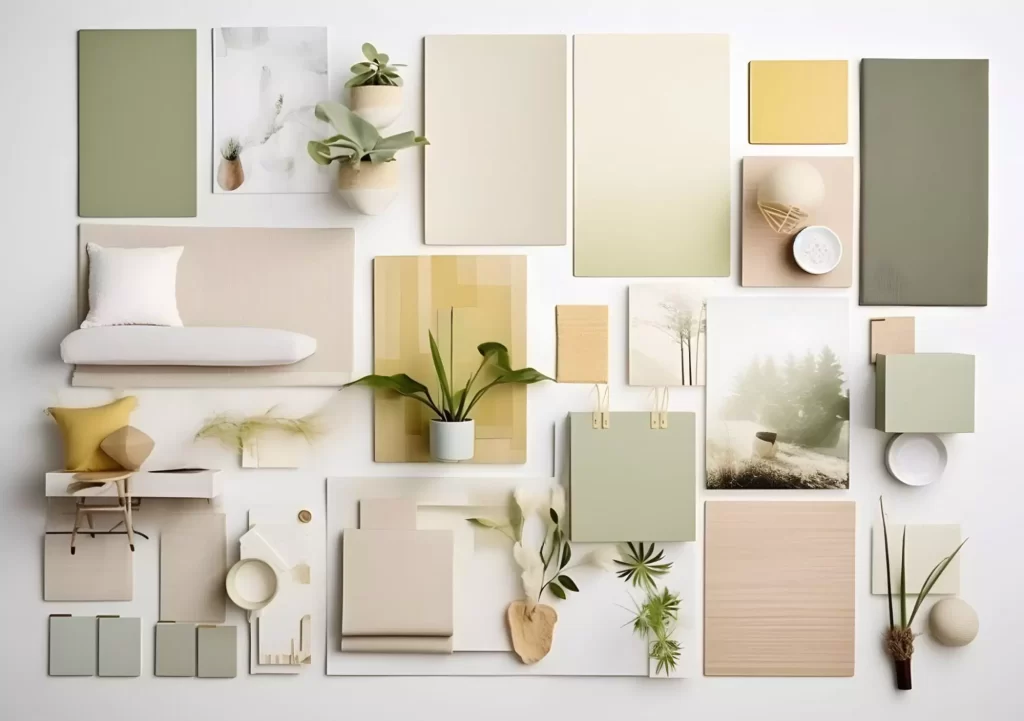
Let’s take a look at why an interior design mood board makes sense when planning a room redesign for yourself or a client.
A place to gather ideas and inspiration
First and foremost, your mood board is a place to gather ideas and inspiration. You’ll be storing all of your inspirational images, photographs, colors, and textiles that you’ve unearthed from a wide range of sources. For those working in teams, a mood board is a great collection point for all of the team’s ideas. Designers, clients, contractors, and other team members can throw their ideas down on the mood board and refer back to the ideas provided by others involved in the project to better understand what they find inspirational for the space.
Helps you build a story
A mood board is a blank page on which you tell the story of your design. By eliminating any pieces that no longer fit the project and adding new ones that are more in line with the style and story that’s evolving, you’re able to create a narrative that can be communicated to stakeholders and clients. Each design element will tell a story; showcasing a specific lifestyle, era, signature style, personal taste, and mood, while all of the elements combined will tell the complete story of the space you are redesigning.
Assists with planning
Although a mood board is considerably more abstract than a blueprint or 3D drawing, it supports the planning process considerably by getting everybody on the same page from day one. When everyone is aligned on the concept, story, style, theme, and mood of a space, it makes it considerably easier to get a sign-off from each stakeholder on the more detailed design plans that come next. When it comes to making decisions on the furniture style, color scheme, and fixtures you plan to use, a mood board can also help provide some concrete visual guidance.
Provides visual clarity
A mood board is a great device for visually communicating ideas between designers and their clients and/or teams. Amid a long design project, the mood board provides a perfect visual reference that all stakeholders can refer back to as a reminder of the original concept and themes. Unlike a written description of an idea, the mood board provides instant clarity of how the space should be evolving. By having this reference point, it’s easier for the team to stay true to agreed-upon ideas and quickly and easily refresh their memories when needed.
Supports collaboration
One of the key advantages of using a mood board in your interior design work is that it encourages more collaboration between stakeholders. When the creation of the mood board is undertaken as a team, the board becomes a common ground for different stakeholder ideas to be seen and taken into account. As the board becomes more refined and curated, collaboration is further supported. This is because the board helps each team member to be aligned on the agreed-upon ideas, it provides a mutual reference point to return to, and it assists those who learn more effectively with visual clues.
Advantages of a Physical Mood Board
While these days we’re used to performing many design tasks from our laptops, there are several upsides to creating a physical interior design mood board. The ability to touch and feel a physical mood board is one key advantage. Rather than limiting your inspirational elements to flat photographs or images, a physical mood board can include fabric samples or textured wallpaper cuttings which enable a client to get a feel–in the literal sense!–of the room being designed.
As a presentation tool, a physical mood board can be extremely persuasive. This is because it is much closer to the reality of the project than a digital mood board can be thanks to the inclusion of real elements such as textiles and wallpapers. While a digital mood board can share these ideas as images, seeing, for example, a swathe of yellow velvet in a photograph and seeing (and feeling it) in person can be two very different experiences. The physical experience of it will be much more representative of how it will look and feel and can therefore, as part of a presentation, be much more effective as a way to get buy-in from a client.
A physical mood board creates boundaries and limitations for your ideas. This is in contrast to a digital mood board that can incorporate as many ideas as you dream up. The limitations provided by a physical mood board can actually benefit an interior designer and the overall design process as it prevents information overload and provides a framework for creativity.
Advantages of a Digital Mood Board
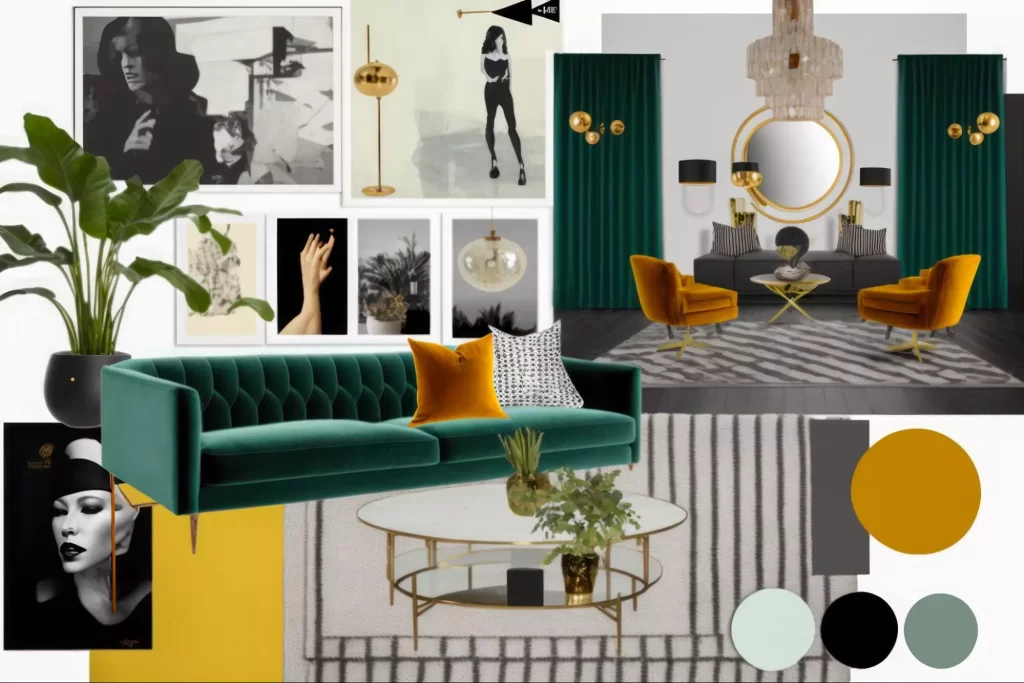
Now that we’ve seen the benefits of using a physical mood board, let’s dive into why you might want to try out a digital mood board for your interior design project. First of all, a digital mood board is accessible whenever you need it and wherever you are. If you’re feeling inspired while on a trip you can upload new images or start playing around with the layout at the click of a button.
A digital mood board is also highly collaborative. You can share progress with team members or project stakeholders as you move through each step of the process. They can access the board, edit it, and contribute their ideas. This can be particularly beneficial at the idea-gathering stage, where the more different inputs you get, the more varied the outcome will be. For clients, enabling collaboration can help them feel like their contribution is both heard and valued, too.
Have you considered incorporating audio or video into your mood board? While a physical mood board is limited to flat images or real-world elements, a digital mood board can include more dynamic elements like music-which can be a great way to create an atmosphere, or video to transport the viewer directly to a time or place that could inspire the design.
Finally, a digital mood board can be easily edited, changed, and added to. Whether large or small, changes you wish to make to your mood board can be quickly applied thanks to digital tools. Adopting the same changes on a physical mood board could set a project back by weeks due to the scale and effort involved.
Popular Mood Board Tools and Software
In this last section, we want to run through some of the best mood board tools for interior designers so you can get an idea of the sort of technology that’s available to assist you with this creative process.
Canva
The digital graphic design platform, Canva, is used by designers from different spheres to create graphics and presentations. While Canva does provide users with a blank canvas mood board that is easy to populate with ideas and inspiration, for those with lesser experience the platform also offers a range of helpful mood board templates, design elements, and fonts. The drag-and-drop function means the usability of Canva for beginners is also very good.
Pinterest is an image-sharing and social media platform that enables the discovery of images and information in the form of pinboards. Ideal for the curation of a mood board, the platform offers users a fantastically diverse collection of images, GIFs, and videos that can be easily saved and added to user collections. With images already organized by theme, it’s easy for users to find exactly what they are looking for.
Morpholio Board
Morpholio Board is a platform specifically designed for the creation of stunning, digital interior design mood boards. Users can effortlessly discover images and ideas, design layouts that express the key messages they want to get across and present their mood boards to multiple stakeholders, with the additional option of collaboration across teams. Accessible via iPhone, Mac, and iPad, Morpholio Board combines image libraries with a distinctive mood board and digital tools enabling users to design or present from wherever they want.
SampleBoard
For the interior designer, home stager, stylist, or wedding planner, SampleBoard enables industry experts to quickly create professional-looking mood boards that can be shared easily with clients. Collaboration and community are key aspects of SampleBoard’s offering, with users encouraged to follow and connect with fellow designers and, in doing so, find more opportunities to get inspired.
Visualist
This free, web-based mood board creator enables you to export your mood board in a variety of formats, provides an unlimited canvas, and, thanks to a handy Chrome extension, enables you to select any image from any web page and add it to your board in seconds. Other tools include cropping, resizing, and even image background removal thanks to a smart AI function.
Conclusion
We hope that, with our detailed guide, you now feel confident in creating your very own interior design mood board. Whether you’re hoping to tackle a redesign in your own home or you’re working in interior design professionally, a mood board provides the ideal platform for collecting, curating, and presenting your ideas.
Thanks to the large number of free digital tools and image libraries available online, you’re in a great position to experiment with the design elements that really inspire you and curate a stylish mood board that fully and effectively communicates your unique interior design vision.
To delve deeper into interior design, visit our blog, or consider the following:
- Watch this session by Snehanshu Mukherjee, Founding Partner at T.E.A.M and Mansi Almadi, an Interior Designer at Studio Lotus
- Talk to a course advisor to discuss how you can transform your career with one of our courses.
- Check out our Interior Design courses – all courses are taught through live, interactive classes by industry experts.
- Take advantage of the scholarship and funding options that come with our courses to overcome any financial hurdle on the path of your career transformation.
Note: All information and/or data from external sources is believed to be accurate as of the date of publication.

